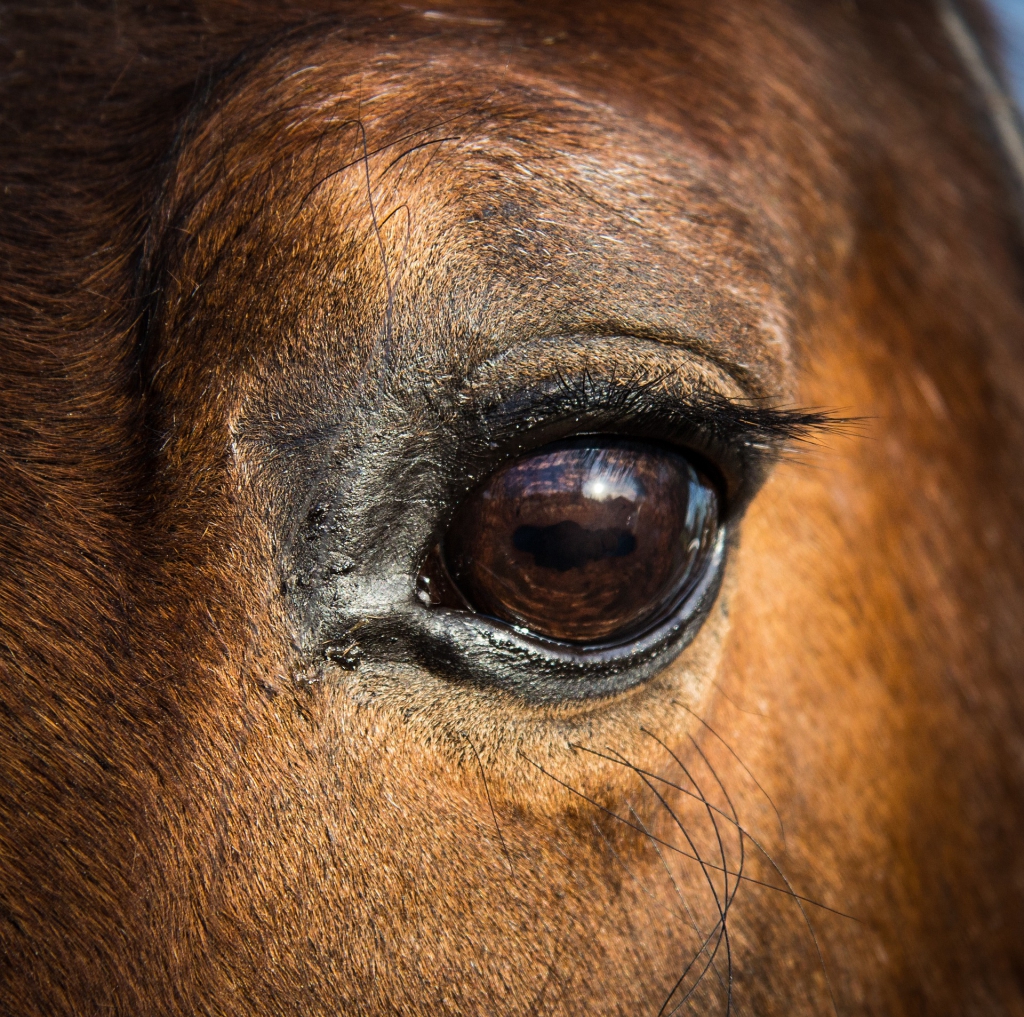The eyes are arguably some of the most complex organs in the body. They are responsible for the incredible ability to process light into visual stimuli. So, naturally, eye problems are very common in horses!
The conditions we see most frequently are intimately related to the regions in which our horses live. In moist environments, such as the southeastern United States, it is far more common to see fungal infections, while here in Colorado, our dry climate and intense UV exposure fosters a different host of issues.

Here is a brief list of eye abnormalities that we often see here in our practice in Colorado:
- Corneal ulcers. A corneal ulcer is a defect in the outer later of the eye, the cornea. Ulcers can be caused by a variety of things, most commonly trauma. Other causes may include irritation related to “dry eye” caused by lack of eyelid or tear duct function or infections such as equine herpesvirus. Corneal ulcers can range from superficial to deep depending on how many layers of the cornea are affected. Luckily for us, most simple, superficial corneal ulcers heal in 3-7 days with topical antibiotic ointment, systemic NSAIDs, such as banamine, and protection of the eye with a fly mask. In some cases, corneal ulcers can progress and become infected, which can be characterized by cloudiness and discoloration of the cornea and require more intensive treatment.
- Conjunctivitis. We’ve all seen it at one point or another: goopy, watery, red eyes and swollen eyelids. Conjunctivitis is inflammation of the soft mucosal tissue surrounding the eye and beneath the eyelids. This condition is commonly caused by environmental irritants, like dust, feed particles, or insects. It can also be caused by foreign bodies (grass awns, pebbles, etc) or infections. To treat conjunctivitis in horses, we turn to topical ointments and environmental management, like putting on a fly mask, watering dusty areas, and utilizing insect control.
- Equine Recurrent Uveitis (ERU). Also known as moon blindness, ERU is the most common cause of blindness in the horse. This condition is characterized by intermittent inflammation of the anterior (front) chamber of the eye. There are three types of ERU – classic, insidious, posterior, which vary in their severity and recurrence. While an exact cause of ERU has not been identified, there are several genetic and environmental factors that contribute to this disease. The inflammation from ERU can be painful and often requires long term management. Topical ointments and systemic NSAIDs are used to reduce pain and inflammation in the eye, and it is critical to protect the eyes from irritants, such as dust and UV exposure to prevent flare-ups.
When to Call the Vet
Eyes are fragile, vital organs. Issues involving the eye should almost always be considered a veterinary emergency and addressed promptly. If you notice any of the following signs, your horse’s eye condition should be assessed by a veterinarian:
- Swelling of eyelids or conjunctiva
- Eye pain – characterized by squinting, sensitivity to light, excess tearing, resistance to touching or handling
- New cloudiness (or blueness) in the eye
- Any injury to the globe
- Excessive discharge – watery, mucousy, or colored
Please Remember: do NOT apply any ointments, rinses or medications to an eye before it has been assessed by a veterinarian. Administering an incorrect medication to a compromised eye can worsen the condition!!
As always, if you have any questions or concerns about your horse’s eyes, please do not hesitate to contact any of the veterinarians here at MVS!



